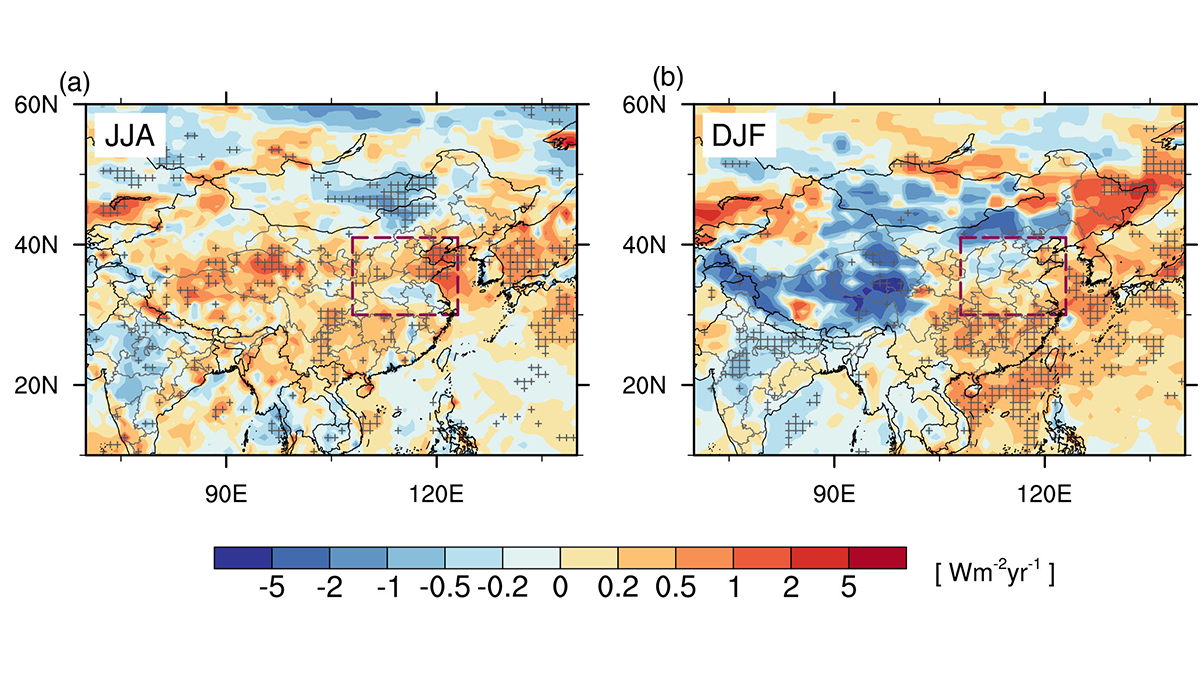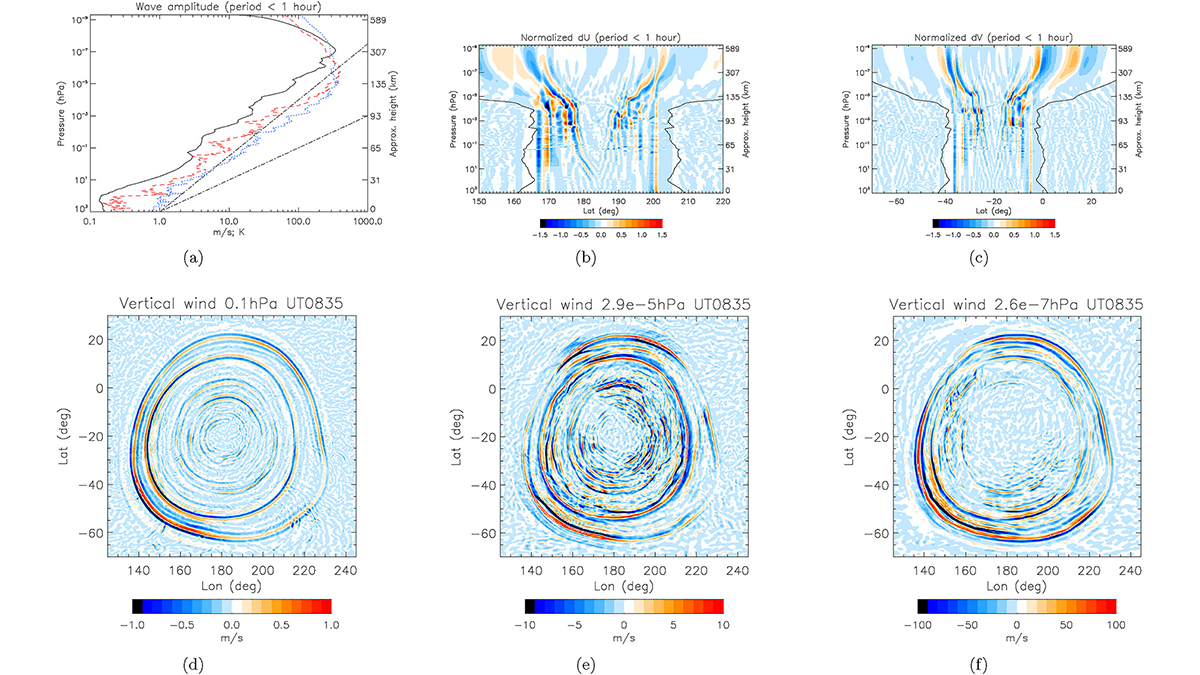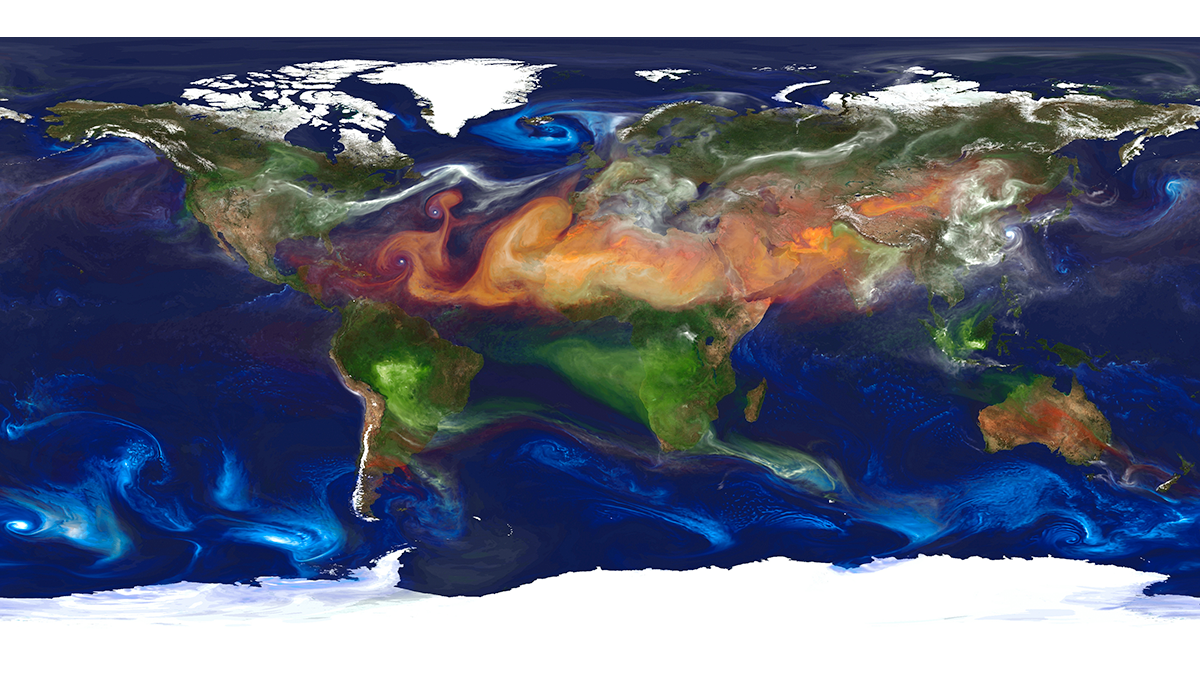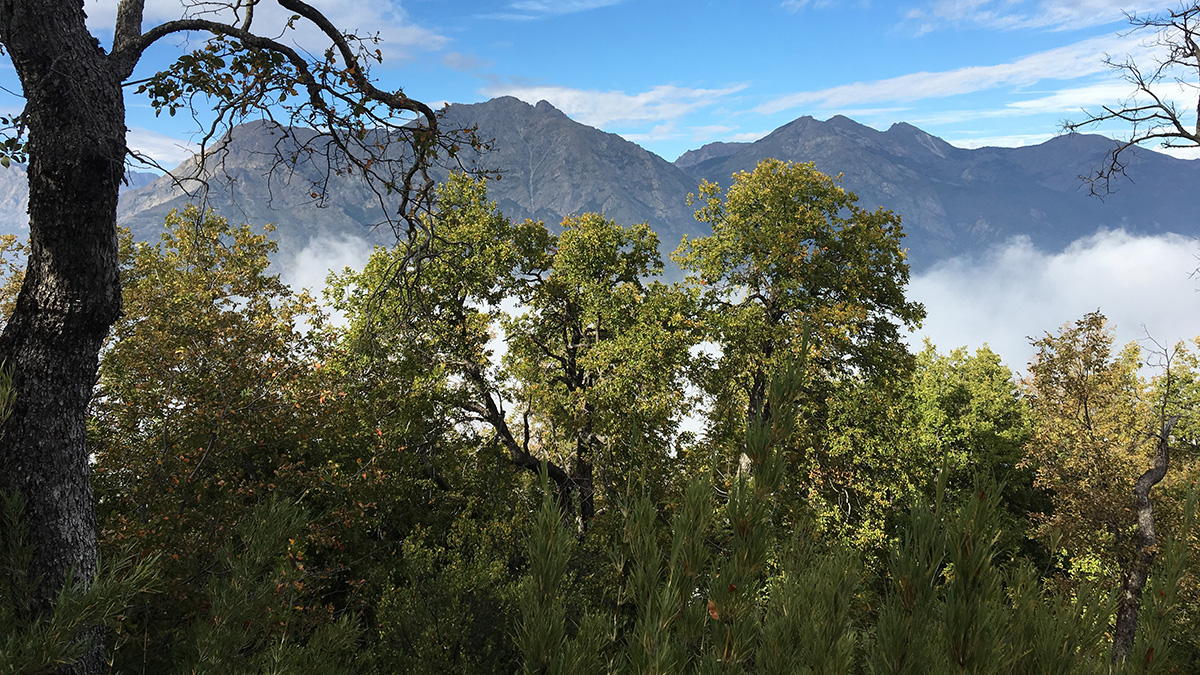During 2013-2019, a distinct seasonality for trends of aerosol concentrations and optical properties was found over Northern China.
everything atmospheric
Simulating Clouds on Arbitrary Grids in Any Spatial Direction
A new non-column based spectral element implementation of cloud microphysics enables full 3D flexibility in computing clouds and improves computational efficiency.
Modeling Whole Atmosphere Responses to the Hunga-Tonga Eruption
A high-resolution whole atmosphere simulation captures the strong, global responses up to the thermosphere and ionosphere following the Hunga-Tonga volcano eruption.
Reducing Aerosol Climate-Forcing Uncertainty: A Three-Way Street
To reduce persistent aerosol-climate-forcing uncertainty, new in situ aerosol and cloud measurement programs are needed, plus much better integration of satellite and suborbital measurements with models.
A 150-Day Periodicity is Revealed in the Southern Extratropics
An internally generated 150-day periodicity is newly identified in the Southern Hemisphere extratropical large-scale atmospheric circulation, which arises from the annular mode’s propagating regime.
Short-Lived Solutions for Tall Trees in Chile’s Megadrought
Some southern beeches in the Andes have plumbed deeper for moisture as the surface has dried up. But doing so may deplete resources and undermine the trees’ future health.
Plants Leave Chemical Fingerprints on an Ozone-Depleting Gas
A first-of-its-kind study suggests that isotope analysis could be used to pinpoint sources and sinks of atmospheric methyl chloride.
A New Look at the Changing Water Cycle Over Land
Whether warming increases or decreases, rain over land depends on the relationship of soil moisture, evaporation, and aridity which shape rain regimes.
Introducing the New Editor in Chief of JGR: Atmospheres
Find out about the person taking the helm of JGR: Atmospheres and her plans for taking the journal forward in the coming years.










